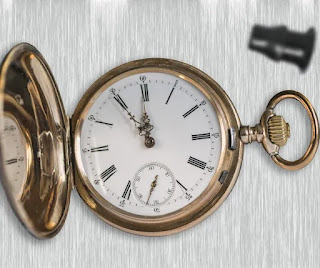Let’s Talk about Time
By Annee Jones
In conducting the research for my upcoming book, A
Child’s Faith, Book #16 in the Keepers of the Light series, I became
curious about the history of timekeeping, as the father of my main character is
a clockmaker. I found this subject also
quite “timely” for a Christmas story, especially since the archetype of Father
Time has played so strongly in classic literature set during this time of year
(consider Dickens’ A Christmas Carol, for example).
In early civilizations, farmers sectioned time into quadrants for planting, growing and harvesting. However, the actual day or hour was not important. As communities grew and life became more complex, the need for order increased. Egyptians realized the parts of day could be marked via the positioning of obelisks and the shadows they cast. Other early methods of keeping time included the hourglass, water-powered devices, and candles that burned at a fixed rate.
Early modern clockmakers were master
craftsmen who designed and built clocks by hand. Clockmaking was considered the most
technically advanced trade throughout the 15th to 17th
centuries. Thus, the best clockmakers
also often built scientific instruments, since they were the only ones trained
in the fabrication and assembly of precision mechanical apparatus.
Clocks were first brought to the American colonies in the early 1600s. Owning and displaying a clock or timepiece was considered a status symbol, an indication of wealth and relative importance in society.
The standardization of working hours and train schedules
that were hallmarks of the Industrial Revolution brought about the need for
ever more precise timekeeping. By the
19th century, wooden casings and individual clock parts were beginning to be mass-produced
in small factories. The skilled work of assembling and synchronizing the parts,
however, still had to be done by hand by master clockmakers.
By the 20th century, interchangeable parts and standardized designs allowed the entire clock to be assembled in factories, and clockmakers have since only specialized in repair.
Because early clockmakers had to fashion all the intricate
parts and wheelwork of clocks by hand, they developed specialized tools to help
them. Some of these include the following:
Balance Truing Caliper: This device was used in fashioning the wheels
and gearwork of the clock, to make sure the wheel, particularly the balance
wheel was balanced and circular. The pivots of the wheel were mounted in the
caliper. An index arm was moved next to the edge and the wheel was spun to see
if the edge was true.
Die/Screw Plate: The die plate was used to cut threads on small
screws. It had a number of threaded die holes of different sizes for making
different threads. A piece of wire was inserted in a hole and turned to cut a
thread on the end. Then a head would be formed on the other end of the wire to
make a screw.
File: Hardened steel files were used to shape the
metal before it was used to make and fit wheels or plates. There were many
variations of files.
Rivet Extracting Pliers: Made of brass or steel, rivet extracting pliers
were used to remove rivets from assorted clock parts.
Jeweler’s Piercing Saw: The blade of the saw was released by undoing
the thumbscrew adjacent to the handle. To start an interior cut, a hole was
drilled and the blade was inserted and reattached to the saw. This device was
popular among clockmakers to repair the ends of clock hands.
Staking tool: An iron vertical plunger was used with an array
of stakes for placing rollers and balanced wheels on staffs.
Turns: The "turns" was a small bow-operated
lathe used for furbishing parts and for working gear blanks to size. During
use, the device was clamped in a vise and the worker held a cutting or
polishing tool on a tee-shaped tool rest with one hand, and shifted the bow
back and forth to spin the part.
Cross Peen Riveting
Hammer: The flat end of the
tool was for general use, whereas the radiused peen end was used for flattening
rivet heads. This tool was used for forging, riveting, striking steel, etc.
Watch for more books from me next year featuring clockmakers and the theme of time!
About Me:
Annee Jones is an inspirational romance novelist who
enjoys sharing her heart and imagination with others. She is
passionate about writing stories that offer hope and encouragement and likes to
think of her books as “romance filled with faith and a sprinkle of fairy dust!”
Professionally, Annee
works as a disability counselor where she helps her clients navigate through
complex medical and legal systems while rediscovering their wholeness in
Spirit.
Annee also enjoys
professional freelance writing for Publishers Weekly in the genres of
faith-based fiction and Christian living.
Connect with Annee here:
https://www.facebook.com/groups/anneesangelgroup
https://www.facebook.com/AuthorAnneeJones
A Child’s Faith
Sources:
https://antique-marks.com/antique-clocks.html
https://en.wikipedia.org/wiki/Clockmaker









No comments:
Post a Comment